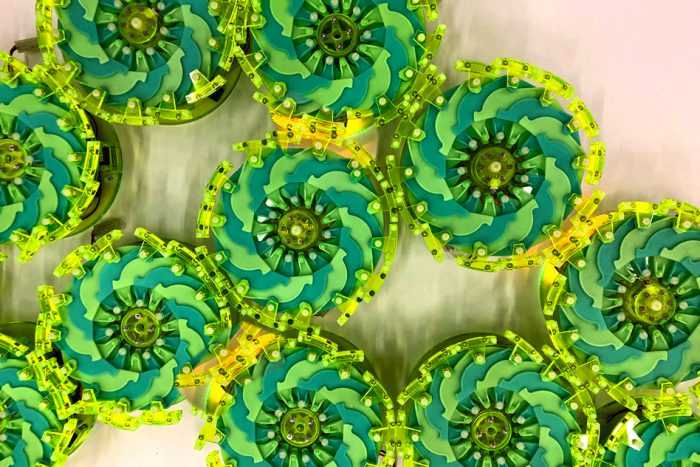As the world of robotics gets more and more advanced, we're constantly seeing robots that are capable of incredible things. They walk like dogs. They play sports. And some can even grab and manipulate objects, just as we do.
In every one of these cases, these robots are increasingly complex machines that perform very specialized tasks. Like, say, ski down a hill! You might ask yourself, is there room in the modern world for a simple robot anymore.
A group of researchers from MIT, Columbia, Cornell, and Harvard think so. It's time to meet their 'particle robots'!
More than the sum of their parts
So what do particle robots do exactly? They expand. Oh yes, and they contract.
Expand. Contract. Expand. Contract. And that's pretty much it.
We know what you're thinking: You got us all excited about robots that just get bigger and smaller?
But that's just what the robots do on their own. In a group, they're a completely different animal, er, machine. Thanks to magnets placed in them, particle robots can join together.That means three, five, six, eight... even more all pulsating as a group. In these formations, the robots are able to move, adapt to different surroundings, and perform a variety of tasks.
Watch them in action below.
Like robot cells
As the video mentions, these robots are based on real life cells. Cells are basically tiny bio machines replicating themselves over and over until they form a large group so they can perform big tasks. Why not use them as a model for robots?
Exactly how this technology is going to work in the future is difficult to say. But as an experiment, it's really impressive. Remember those robots that we were talking about at the start of this post? All of those robots are built into a fixed shape, need all of their parts working to function properly, and have a central 'brain' that controls them.
The particle robots? Individual bots can be added and removed without affecting the group. The group doesn't have a central brain either. And the group can change its formation lickety split. Can you imagine what robots like this could do one day?
 Though they look like some toys left out at a preschool, these are actually some high-tech robots! (MIT/Felice Frankel)
Though they look like some toys left out at a preschool, these are actually some high-tech robots! (MIT/Felice Frankel)










wow.
😀 Cool! Reminds me of Big Hero 6! 😎 😎 😎 😎 😎 😎